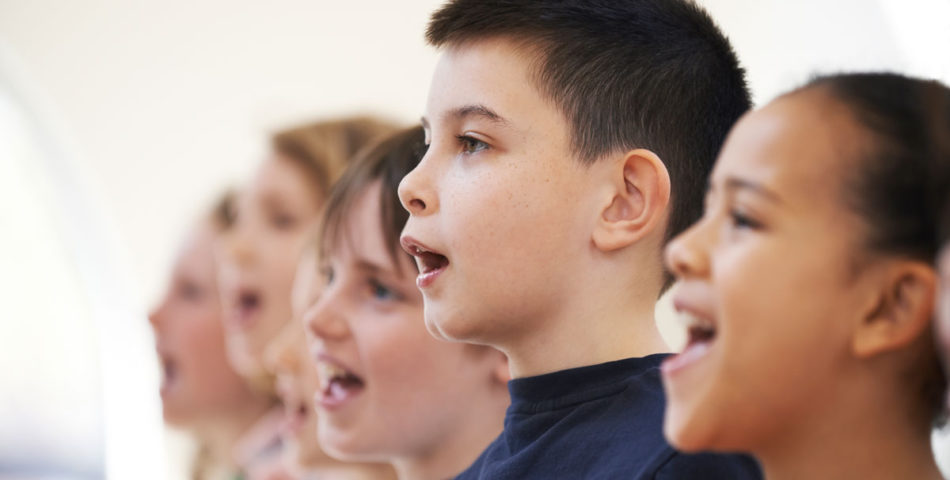What Is Solfege Singing?

Students sing their way to musicianship when they experience solfege singing. What is solfege singing? Solfege is a method of ear training. It helps students hear music in their head, freeing them from dependence on a score, instrument or recording. Students learn pitch, harmony and sight reading with this method.
Children who learn solfege can eventually read a score and hear the music internally, without singing. The Harmony Road Music curriculum uses solfege training to start students on the path to a lifetime of musical confidence and expressiveness.
Easy to Sing Syllables
Solfege is based on the familiar syllables of do-re-mi-fa-sol-la-ti-do. These syllables correspond to musical notes.
You use your first and most natural musical instrument with solfege: your voice. Learning piano or another instrument later is easier when the foundations of music have been laid with solfege.
Solfege can use either a movable or fixed do system. Harmony Road uses fixed do, where each syllable corresponds to the name of a note. With fixed do, each syllable is associated with a particular note making it easy for the student to develop relative pitch and hear and be able to identify key centers.
What Are the Advantages of Learning Solfege?
Once a student internalizes solfege syllables, the world of music opens to them. When syllables are associated with notes, students as they develop their musicianship can mentally hear pitches and sing them the first time they see a score.
Solfege syllables are easy to sing and remember. Singing notes using numbers or the alphabet can be confusing, especially for a young child. The one-syllable sounds of solfege flow naturally. They’re easy to pronounce. A student of any age can quickly learn solfege syllables.
Many people sing scales using the syllables of solfege. But for most students in the U.S., that’s where it ends. With solfege musical training, students continue to use the syllables even when they learn to read music or play piano. Solfege becomes their musical language.
Solfege Makes Sight-Singing Easier
Students of solfege learn to sight sing. They can sing the notes printed on a page the first time they see them. Without this skill, a student needs to hear a song before singing it.
Students associate solfege syllables with notes, making it possible to identify key centers for a piece of music. Students can sing what they see because they’ve sung these notes and note patterns previously. They also internalize harmony and feel at ease with hearing and playing chord progressions. Students experience major and minor keys and modes in their solfege training.
Singing With Movement
At Harmony Road Music, our lessons include singing, movement and creative expression. This pairing of music and movement can speed learning and help with memorization. Plus, it’s natural and fun for children to stay active and move with the music.
The Harmony Road Music method and materials helps new students and teachers get started on a musical journey. Contact us to learn more about our curriculum and classes.

2 Comments
Do you offer classes in solfage singing?
I want to learn to sight read better